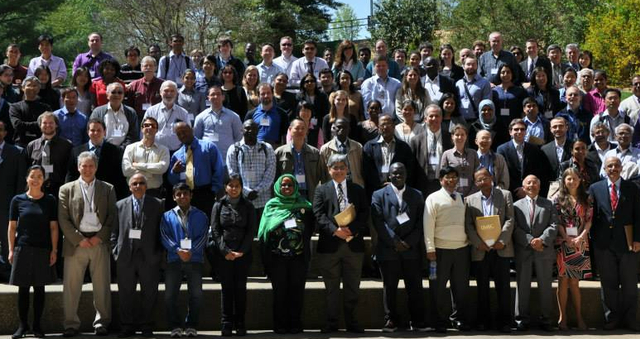


 A special feature of Probability and Statistics Day at UMBC 2014 is that the conference, including the workshop, is open to all statistics graduate students
from UMBC and local universites free of charge; however, REGISTRATION IS REQUIRED! The deadline to register is Friday,
April 11, 2014. // REGISTER NOW
A special feature of Probability and Statistics Day at UMBC 2014 is that the conference, including the workshop, is open to all statistics graduate students
from UMBC and local universites free of charge; however, REGISTRATION IS REQUIRED! The deadline to register is Friday,
April 11, 2014. // REGISTER NOW
For more information, contact any member of the organizing committee:
Bimal Sinha
Conference Chair
443.538.3012
Kofi Adragni
410.455.2406
Yvonne Huang
410.455.2422
Yaakov Malinovsky
410.455.2968
Thomas Mathew
410.455.2418
Nagaraj Neerchal
410.455.2437
DoHwan Park
410.455.2408
Junyong Park
410.455.2407
Anindya Roy
410.455.2435
Elizabeth Stanwyck
410.455.5731

Participant Information
Joshuah Touyz
Paper: A Spatial-Temporal Model of Cluster Growth
Spatial formation of clusters in natural, physical and social sciences is a common phenomenon. Traditional spatial methods have predominantly focused on interpolating within space yet as computing power increases more comprehensive models include time-elements. The resulting constructions are non-trivial as significant computational and modeling problems arise; in particular, identifying appropriate time dynamics and their interaction with underlying spatial processes. To this end, we explore the construction of a dynamical spatial-temporal model to model growth of clusters. Our methodological process is two-fold. First, a model which governs the point generating process of surface intensity factors is proposed. A combined approach using Bayesian hierarchical methods and stochastic differential equations is considered. Subsequent to model development a k-medoid unsupervised learning algorithm is implemented that allows one to study macro and local properties of communities. Conditional on the intensity the data is assumed to follow a Poisson Process where it's divisibility property ensures spatial independence in gridded regions. Ultimately, our methodology is used to predict future growth rates to data sets traditionally considered too large to explore using conventional geospatial methods. The motivating example is cast in the context of urbanization and applied to the Lucas County Ohio Real Estate data set.